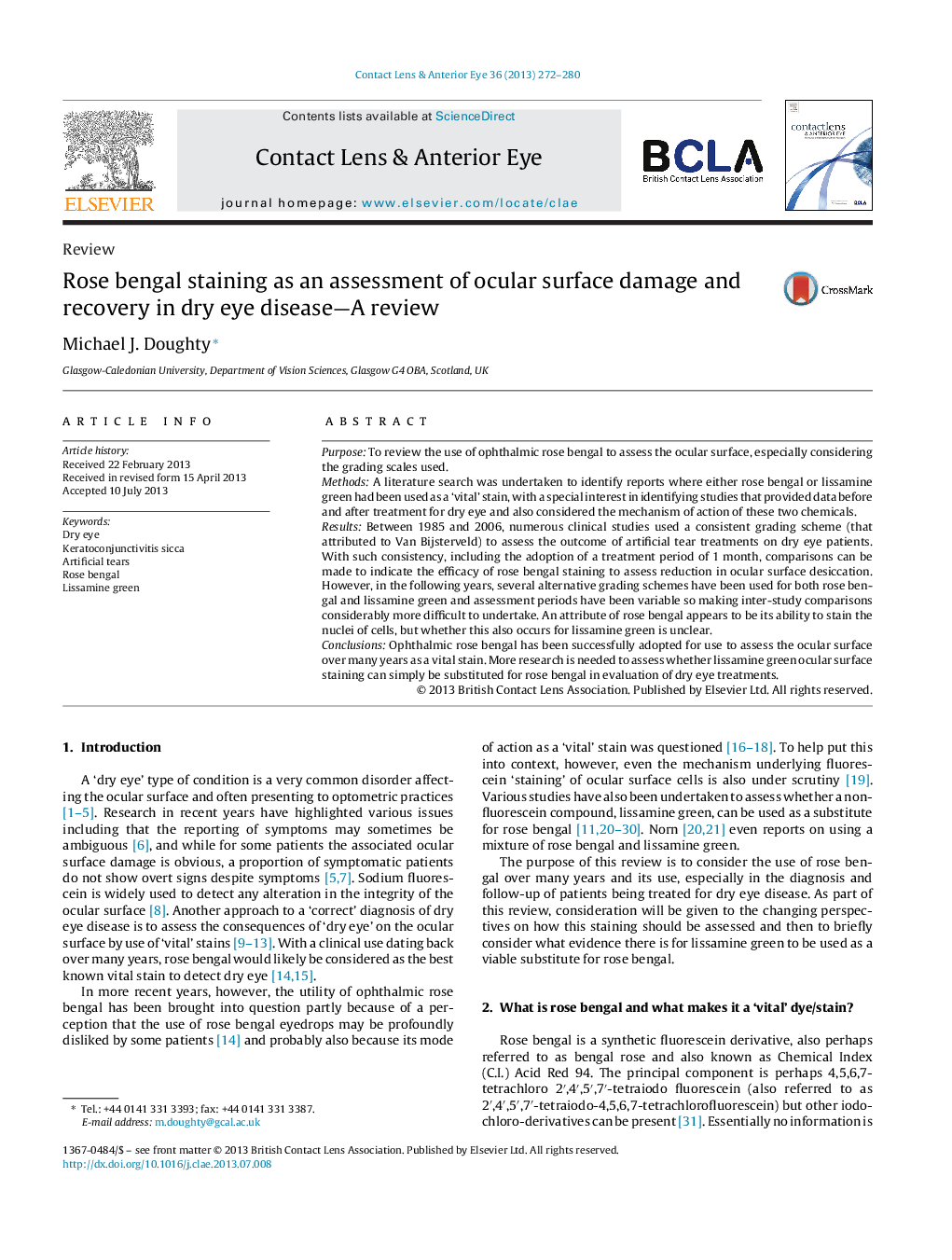| Article ID | Journal | Published Year | Pages | File Type |
|---|---|---|---|---|
| 2693571 | Contact Lens and Anterior Eye | 2013 | 9 Pages |
PurposeTo review the use of ophthalmic rose bengal to assess the ocular surface, especially considering the grading scales used.MethodsA literature search was undertaken to identify reports where either rose bengal or lissamine green had been used as a ‘vital’ stain, with a special interest in identifying studies that provided data before and after treatment for dry eye and also considered the mechanism of action of these two chemicals.ResultsBetween 1985 and 2006, numerous clinical studies used a consistent grading scheme (that attributed to Van Bijsterveld) to assess the outcome of artificial tear treatments on dry eye patients. With such consistency, including the adoption of a treatment period of 1 month, comparisons can be made to indicate the efficacy of rose bengal staining to assess reduction in ocular surface desiccation. However, in the following years, several alternative grading schemes have been used for both rose bengal and lissamine green and assessment periods have been variable so making inter-study comparisons considerably more difficult to undertake. An attribute of rose bengal appears to be its ability to stain the nuclei of cells, but whether this also occurs for lissamine green is unclear.ConclusionsOphthalmic rose bengal has been successfully adopted for use to assess the ocular surface over many years as a vital stain. More research is needed to assess whether lissamine green ocular surface staining can simply be substituted for rose bengal in evaluation of dry eye treatments.
